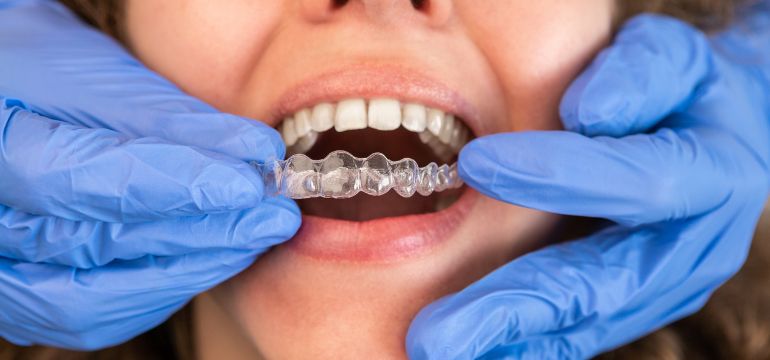The world of dentistry has seen incredible advancements, and orthodontics is no exception. Gone are the days when metal braces were the only option for straightening teeth. Today, a discreet and comfortable alternative has taken center stage. Yes, we are talking about invisible braces, also known as clear aligners.
This revolutionary approach has transformed the way people achieve their dream smiles. Are you curious to know how aligners work and who would have thought of this idea? Well, let’s get into the world of invisible braces and explore everything you need to know about this modern orthodontic solution.
The switch from traditional to transparent:
Traditional braces that consist of metal brackets and wires have been a staple in orthodontics for decades. Despite their effectiveness, they were a little uncomfortable, noticeable, and required dietary restrictions. These minor inconveniences led to an innovation.
The invention:
The concept of clear aligners dates back to the late 1940s, but it wasn’t until the late 1990s that they gained widespread popularity with the introduction of Invisalign. Zia Chishti, a Stanford University graduate student, co-founded Align Technology and brought Invisalign to the market, revolutionizing orthodontic treatment.
Today, invisible braces boast a high success rate, comparable to traditional braces, in treating a wide range of orthodontic issues. Studies show that clear aligners are effective in correcting mild to moderate crowding, spacing, overbites, and underbites.
What are aligners made of?
Invisible braces are typically made from a clear, thermoplastic material called polyurethane. This material is BPA-free, medical-grade plastic that is custom-moulded to fit over your teeth.
Who can wear these?
While invisible braces are a popular choice for adults and teenagers, they may not be suitable for everyone. Generally, they are recommended for individuals with:
- Mild to moderate orthodontic issues
- Good oral hygiene habits
- The commitment to wear the aligners for the required 20-22 hours per day
Pros and cons:
Pros:
- Discreet: They are virtually invisible, allowing you to straighten your teeth without feeling self-conscious.
- Comfort: Smooth plastic aligners are more comfortable than metal braces, reducing irritation to the cheeks and gums.
- Removable: You can remove the aligners for eating, drinking, and brushing, making it easier for dietary choices and to maintain oral hygiene.
- Fewer dental visits: It requires fewer adjustments and checkups compared to traditional braces.
Cons:
- Requires discipline: Effective treatment relies on your commitment to wearing the aligners consistently.
- Not suitable for all cases: Aligners are in general effective, but they may not be effective for severe orthodontic problems or complex bite issues.
- May affect speech initially: Some people may experience a slight lisp or speech impediment when first wearing aligners.
- Cost: It is more expensive than traditional braces.
How to Care for Clear Aligners
- Clean your aligners: Rinse them with lukewarm water and use a soft-bristled toothbrush to gently clean them.
- Store them properly: When not in use, keep your aligners in their case to prevent damage or loss.
- Avoid eating or drinking with aligners: Remove them before meals and snacks to prevent staining or damage.
- Maintain good oral hygiene: Brush and floss your teeth after every meal and before putting your aligners back on.
Conclusion
Invisible braces offer a modern and discreet solution for achieving a straighter smile. With their comfort, convenience, and aesthetic appeal, they have become a popular choice for individuals seeking to improve their oral health and boost their confidence. If you are considering orthodontic treatment, consult with your dentist or orthodontist to determine if invisible braces are the right option for you.
